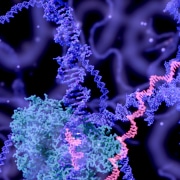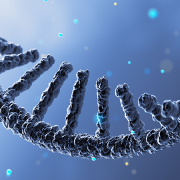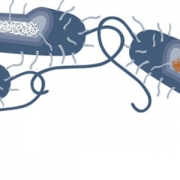HIV and the genome
Genome editing has not been without controversies, but some studies suggest it may hold the cure for patients living with HIV
It was widely reported last year that the world’s first genome-edited babies had been born in China, and that these babies’ genomes had been edited with the aim of ensuring they would be resistant to HIV.
This work, and the scientist responsible, have been widely condemned. But many other scientists are using genomics and genome editing to combat HIV in less controversial ways.
Why a genomic approach?
HIV remains a serious threat to health. Antiretroviral therapies prevent the virus from replicating, but if treatment is interrupted then the virus quickly starts replicating again. Research to find a drug therapy that will provide a cure has met with little success.
The HIV virus can integrate its genome into that of some host cells, where it can lay dormant. While the infection in these cells remains latent, viral proteins are not produced, so the body’s immune system does not recognise and destroy the infected cells. This is why people living with HIV usually need to remain on antiretroviral therapies for life, even when they respond well to treatment.
HIV and the human genome
The baby girls born in China reportedly had modifications to the CCR5 gene. This gene codes for a receptor found on the surface of white blood cells. This receptor is in turn one of the main targets used by most strains of the HIV virus, to enter and infect cells.
More than 20 years ago, a naturally occurring mutation was identified in people who had not contracted HIV, despite high-risk exposure to the virus. This mutation turned out to be in the CCR5 gene, and subsequent studies found that the variant – named CCR5Δ32 – is missing a crucial sequence. People with two copies of this mutation are mostly resistant to HIV infection. Meanwhile, heterozygotes are more resistant than people with two complete copies of the CCR5 gene, as well as showing slower disease progression and lower viral loads if they do contract HIV.
In 2007 Timothy Brown, then known only as ‘The Berlin Patient‘, became the first – and so far only – person to be permanently cured of HIV. Brown was already receiving treatment for HIV when he became ill with acute myeloid leukaemia. After chemotherapy failed, he received an allogenic stem cell transplant from a donor homozygous for CCR5Δ32, and since then he has not needed medication for HIV.
Brown’s cure is unlikely to be replicated, as he suffered severe graft-versus-host disease, which would make trying the same technique on a patient who did not otherwise require a stem cell transplant unethical. However, researchers have been trying to create gene therapies where the patient’s own cells (either hematopoietic stem cells or induced pluripotent stem cells) undergo genome editing outside the body, and are then returned. A number of clinical trials are taking place using this approach.
Attacking the viral genome
Genome editing approaches have also been employed to attack directly the latent viral genome within host cells.
One promising method has been successful in vitro. According to a 2018 paper in Nature, researchers using CRISPR/Cas9 were able to disrupt crucial genes for virus replication within white blood cells in culture. They were able to cut the proviral tat and rev genes in three places each, rendering them inactive.
In a subsequent paper published in Cell, the same team has gone on to trial the system in vivo, using human HIV-infected immune cells engrafted in humanised mice. Intravenous administration of the viral vector carrying Cas9 and CRISPR guide RNAs was successful in excising the proviral DNA in the latently infected human cells.
The researchers hope that this method can be developed into a treatment for use in patients, to destroy the latent viral reservoir and provide a functional cure, freeing patients from a lifetime of medication.
–









